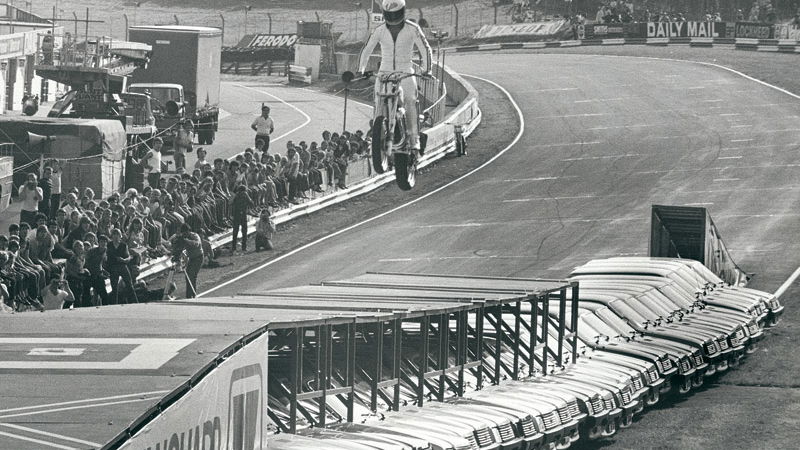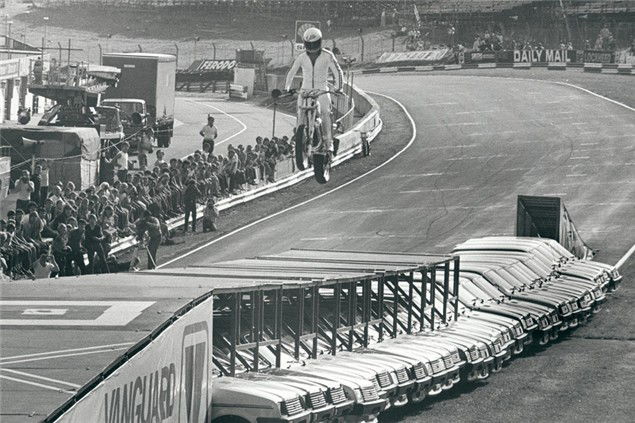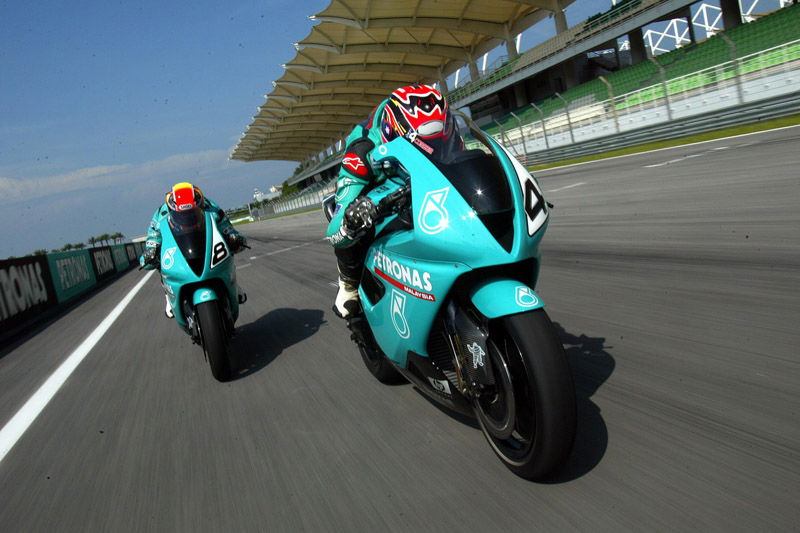Eddie Kidd Biography
Eddie sits with Barry Sheene and Evel Knievel as a biking icon and now takes on his biggest challenge - to walk again. And who said white men can't jump?


We sit with mild anxiety in the front room of Eddie's semi-detached Hertfordshire cottage. A shout goes out for "Eddie". A "Yeah" comes back. And then the sound of a wheelchair gingerly negotiating a cramped interior.
A front trolley wheel on Eddie's 'chair refuses to get in line and snags on a door jamb. We sit tight while Kidd doggedly manipulates his wheels through the hazard. This is awkward. There is no rulebook in the unfamiliar and inconsistent arena of abled/disabled protocol. Do you help or let the man sort himself out?
"Do you want a hand Eddie?" I ask, after short time that feels like a light year. "No, I'm all right thanks," he says, head down as he concentrates on the job in hand. Eddie Kidd, multiple World Record holder and good-looking bastard, enters the room.
He's much slimmer and a great deal sparkier than anyone who saw pictures of him in the recent aftermath of his 1996 Long Marston disaster could imagine. He shakes hands and settles into a seat with a little assistance. But even in the shuffle onto the sofa there's a strength and agility slightly unfamiliar in a currently 'chair-bound man recovering from a proper near-death experience.
We get the tea on. "In the Arsenal mug," requests Eddie. He's registered the surprise at his general demeanour. "Go on - feel that," he beckons, tensing his left bicep like a circus strongman. The muscle is ferociously tight. "Yeah." And he nods one of those 'you better believe it' nods.
There's something going on here. If this was ever expected to be a voyage around a smashed-up has-been, it is immediately clear that Eddie Kidd has other plans. He confesses to completing 600 sit-ups that morning - more than most of us manage in a lifetime.
But Kidd is one of those people who packs a great deal into a lifetime. Cast your mind back to Eddie's world of big leaps, Levi ads and the compulsory 'leggy lovelies' of the 1980s. He had it all. Now he has it all to do.
When he smashed himself up at Long Marston in August 1996, he did it properly: broken pelvis, collarbone and T6 vertebra in the neck. But it was the massive injury to his cerebellum - the part of the brain at the base of the skull that coordinates muscular activity - that was the big one.
The pelvis, collarbone and vertebra have healed. The legacy of the brain injury persists in movement and speech. But precisely because it is a brain injury, there can be hope - however slim - of improvement.
And Eddie Kidd has turned this slim hope into a belief that he will not only walk again, but ride again too. His speech is slurred and he sometimes has trouble getting his mouth round some syllables: a lot like some deaf people talk, but slower and more deliberate. Not bad at all for someone who was seconds away from being profoundly dead.
"The doctors wanted to turn the machine off," says Eddie. "Thank God they didn't get to do it 'cos they've got a big fucking shock coming." And he fixes the room with a spirited stare as if to make sure no one around him doubts not his determination, but the end result, the fact that Eddie Kidd will ride again.

